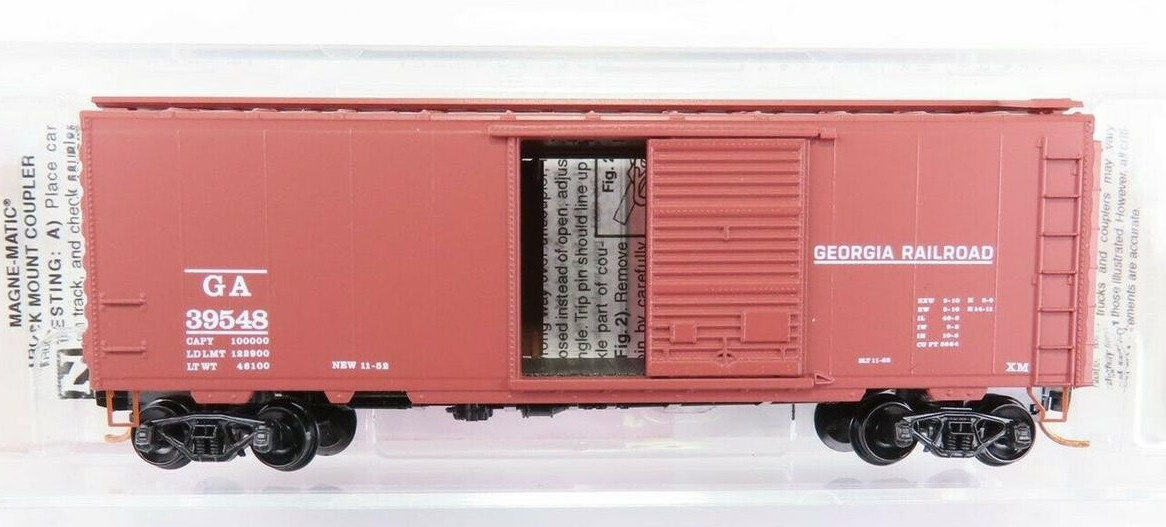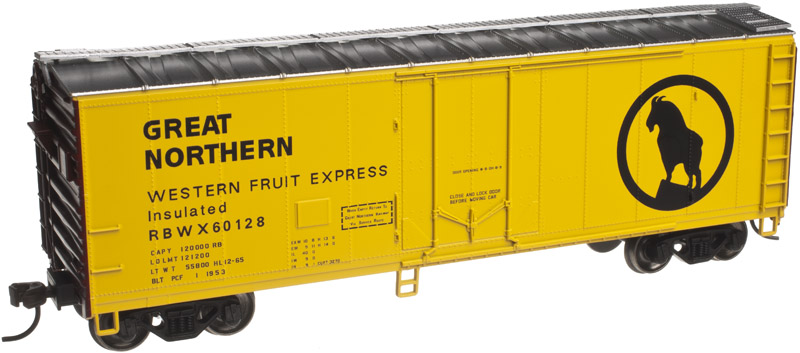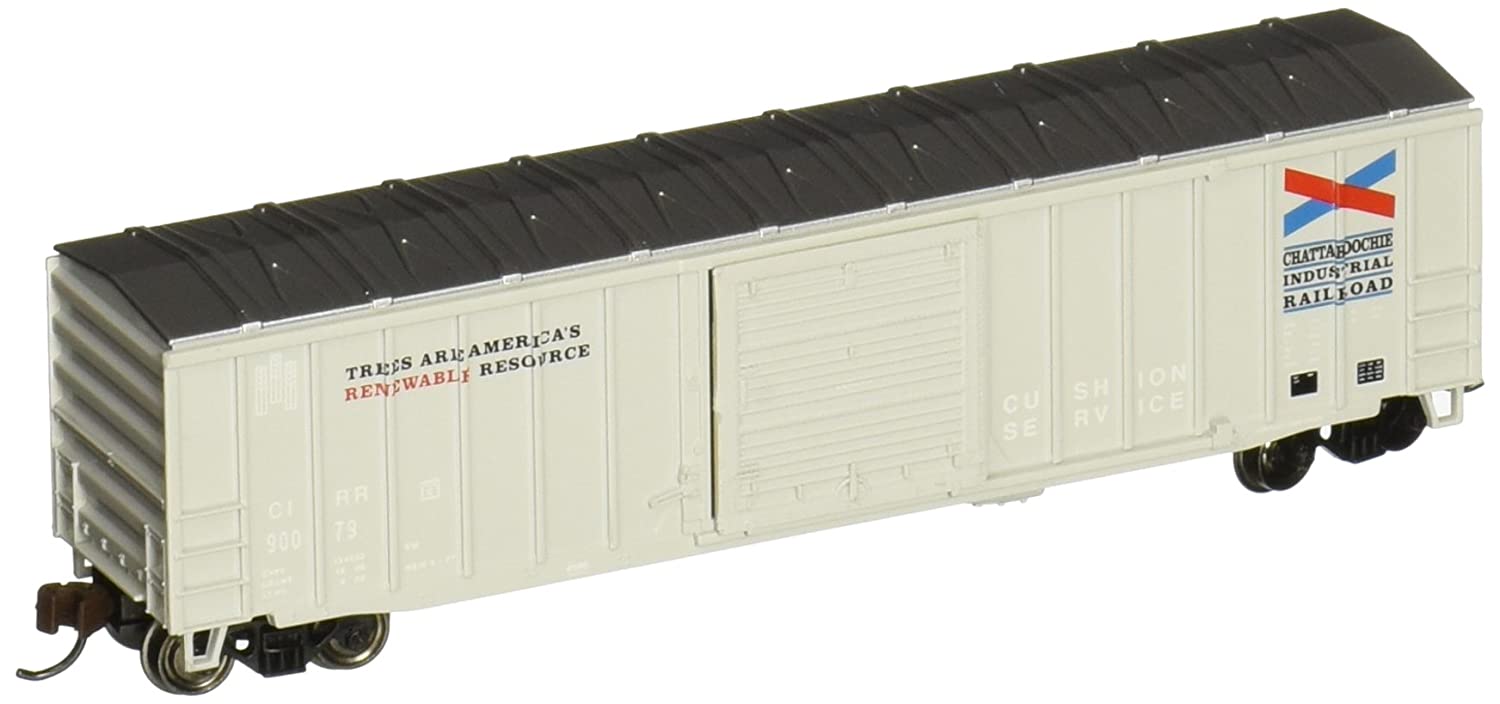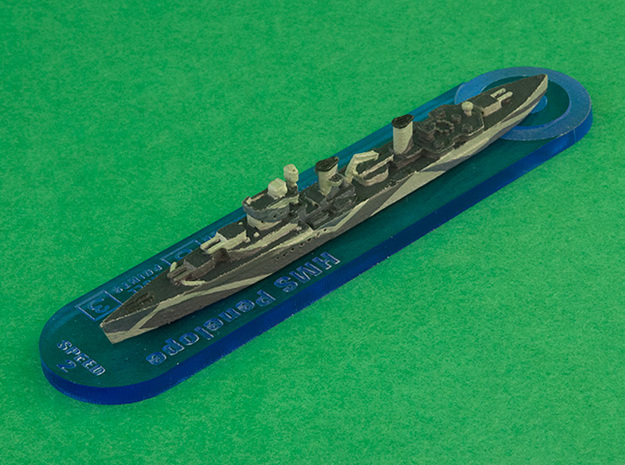Specific Item Information: Only available as part of 3-Pack PNS0038
Model Information: This is Micro-Trains first body style. It was introduced in 1972. Its is a model of a Pullman-Standard PS-1 boxcar from circa 1957. Micro-Trains does not market it as a PS-1 so as to allow themselves some latitude so they can use this car to model non-PS prototypes. Hundreds of different releases have used this body style in various paint schemes and road names. They are equipped with 6' sliding doors, either Youngstown (4/5/4 rib pattern) or Superior (7 panels). It is not a model of a "modern" steel boxcar as the length (40 foot) and the roofwalk are more typical of the transition era (1939 - 1957).
In 2019, Micro-Trains started releasing this model with new body-mounted couplers attached to a new underframe.
In 2019, Micro-Trains started releasing this model with new body-mounted couplers attached to a new underframe.
Prototype History: The 40' Boxcar is widely known as one of the most popular freight cars used by railroads as they transitioned from steam to diesel. In particular the Pullman Standard or PS-1 design was one of the most popular and was widely used by North American railroads. These boxcars were built beginning in 1947 and share the same basic design, with certain elements such as door size, door style or roof type varying among the different railroads and production years. When production of these cars ceased in 1963, over 100,000 had been produced.
So just what is a PS-1? Well the simple answer is it is any boxcar built by Pullman Standard from 1947 on. The design changed over the years – sometimes subtly, sometimes for customer request, and sometimes in a larger way. In general, most PS-1’s built from 1947 to 1961 share the same dimensions and basic construction techniques. These cars all had a length of 40′, a height of 10’5″ or 10’6″, welded sides and ends and roof of Pullman’s own design. The greatest variation was in the size and style of doors used. Pullman Standard also offered 50′ and later 60′ boxcars – also with the PS-1 designation.
So just what is a PS-1? Well the simple answer is it is any boxcar built by Pullman Standard from 1947 on. The design changed over the years – sometimes subtly, sometimes for customer request, and sometimes in a larger way. In general, most PS-1’s built from 1947 to 1961 share the same dimensions and basic construction techniques. These cars all had a length of 40′, a height of 10’5″ or 10’6″, welded sides and ends and roof of Pullman’s own design. The greatest variation was in the size and style of doors used. Pullman Standard also offered 50′ and later 60′ boxcars – also with the PS-1 designation.
Road Name History: 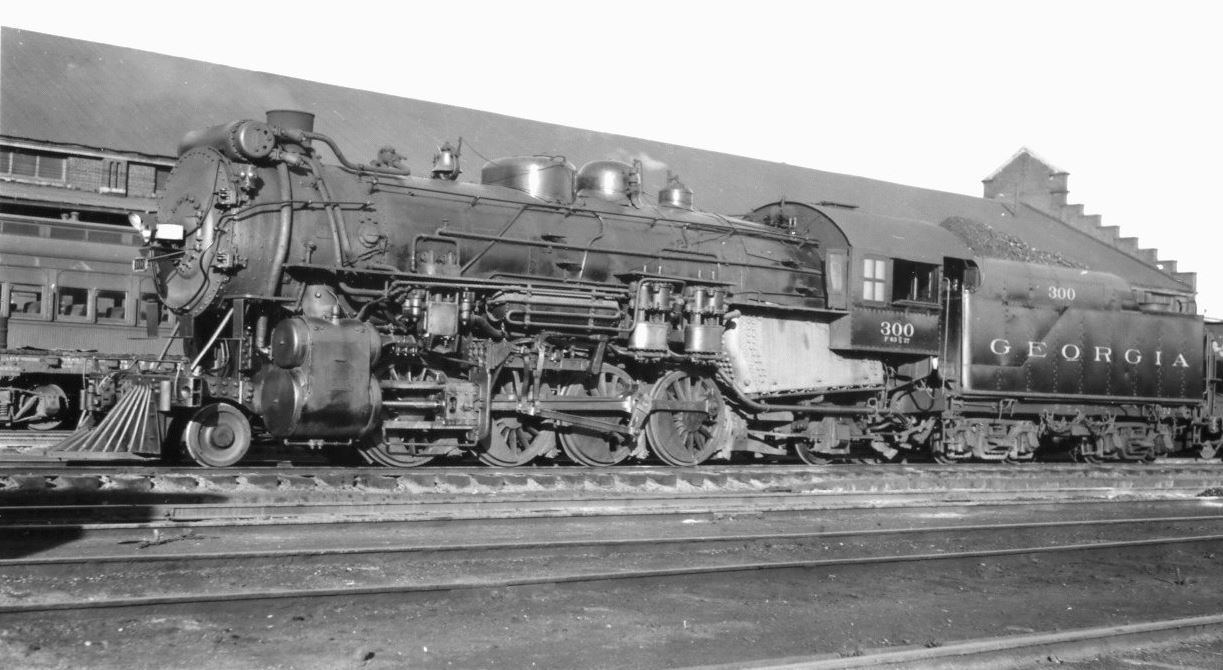 As with the Clinchfield, for most of its history the Georgia Railroad existed as a non-incorporated company operating the railroad property of the Georgia Railroad & Banking Company on behalf of Louisville & Nashville and Atlantic Coast Line. In turn, the Georgia controlled the two West Point Route railroads. The Georgia Railroad & Banking Company was established in 1833. The 329 mile line is Y shaped with Augusta on the east end, and Atlanta and Macon in the west, plus a trio of branches on the Atlanta leg. The Georgia had been built to 5’ gauge like most lines in the South. It was standard gauged in 1886.
As with the Clinchfield, for most of its history the Georgia Railroad existed as a non-incorporated company operating the railroad property of the Georgia Railroad & Banking Company on behalf of Louisville & Nashville and Atlantic Coast Line. In turn, the Georgia controlled the two West Point Route railroads. The Georgia Railroad & Banking Company was established in 1833. The 329 mile line is Y shaped with Augusta on the east end, and Atlanta and Macon in the west, plus a trio of branches on the Atlanta leg. The Georgia had been built to 5’ gauge like most lines in the South. It was standard gauged in 1886.
The big power in the days of steam were Mikados and Pacifics. Some of the Mikes were picked up second hand from New York Central and Clinchfield. Motive power from the West Point Route roads was frequently seen on the Georgia and vice versa. The Georgia dieselized fairly early with EMD and Baldwin switchers, F units and geeps (set up to run short-hood-forward like their parents) in a nice blue with silver band paint scheme also used on the West Point Route. In the 60’s, they dropped the silver band and by the time their GP40s arrived they had switched to black with white lettering and frame stripes. The diesel fleet hovered around 30 units. The last locomotives delivered to Georgia were GP38-2’s in the late 70s and they arrived in Family Lines gray.
Passenger service on the Georgia had always been a modest affair and during the 60s had dwindled to just mixed trains. When Amtrak appeared, Georgia opted out, instead continuing to run the mixed trains until 1983. This was because in Georgia Railroad & Banking Company’s original charter in 1833 the line was exempted from state and local taxes with the exception of a modest tax on net profits. In return, the company was to supply passenger service on its routes in perpetuity. During the 1970s, the “super-mixed” trains often consisted of 3 diesels, 50 or so freight cars, a streamlined coach, and a caboose and they would switch industries and stop (the coach) at depots along the way.
In 1983, the Seaboard Coast Line and Louisville & Nashville merged to form Seaboard System. As such, there was no longer a reason to have their two unincorporated lines, Georgia and Clinchfield, as separate entities and they were merged into Seaboard System along with the West Point Route roads. The mixed train operation ended less than 4 months after the merger.

The big power in the days of steam were Mikados and Pacifics. Some of the Mikes were picked up second hand from New York Central and Clinchfield. Motive power from the West Point Route roads was frequently seen on the Georgia and vice versa. The Georgia dieselized fairly early with EMD and Baldwin switchers, F units and geeps (set up to run short-hood-forward like their parents) in a nice blue with silver band paint scheme also used on the West Point Route. In the 60’s, they dropped the silver band and by the time their GP40s arrived they had switched to black with white lettering and frame stripes. The diesel fleet hovered around 30 units. The last locomotives delivered to Georgia were GP38-2’s in the late 70s and they arrived in Family Lines gray.
Passenger service on the Georgia had always been a modest affair and during the 60s had dwindled to just mixed trains. When Amtrak appeared, Georgia opted out, instead continuing to run the mixed trains until 1983. This was because in Georgia Railroad & Banking Company’s original charter in 1833 the line was exempted from state and local taxes with the exception of a modest tax on net profits. In return, the company was to supply passenger service on its routes in perpetuity. During the 1970s, the “super-mixed” trains often consisted of 3 diesels, 50 or so freight cars, a streamlined coach, and a caboose and they would switch industries and stop (the coach) at depots along the way.
In 1983, the Seaboard Coast Line and Louisville & Nashville merged to form Seaboard System. As such, there was no longer a reason to have their two unincorporated lines, Georgia and Clinchfield, as separate entities and they were merged into Seaboard System along with the West Point Route roads. The mixed train operation ended less than 4 months after the merger.
Brand/Importer Information: Micro-Trains is the brand name used by both Kadee Quality Products and Micro-Trains Line. For a history of the relationship between the brand and the two companies, please consult our Micro-Trains Collector's Guide.
Manufacturer Information:  Micro-Trains Line split off from Kadee Quality Products in 1990. Kadee Quality Products originally got involved in N-Scale by producing a scaled-down version of their successful HO Magne-Matic knuckle coupler system. This coupler was superior to the ubiquitous 'Rapido' style coupler due to two primary factors: superior realistic appearance and the ability to automatically uncouple when stopped over a magnet embedded in a section of track. The success of these couplers in N-Scale quickly translated to the production of trucks, wheels and in 1972 a release of ready-to-run box cars.
Micro-Trains Line split off from Kadee Quality Products in 1990. Kadee Quality Products originally got involved in N-Scale by producing a scaled-down version of their successful HO Magne-Matic knuckle coupler system. This coupler was superior to the ubiquitous 'Rapido' style coupler due to two primary factors: superior realistic appearance and the ability to automatically uncouple when stopped over a magnet embedded in a section of track. The success of these couplers in N-Scale quickly translated to the production of trucks, wheels and in 1972 a release of ready-to-run box cars.
Micro-Trains Line Co. split off from Kadee in 1990 to form a completely independent company. For this reason, products from this company can appear with labels from both enterprises. Due to the nature of production idiosyncrasies and various random factors, the rolling stock from Micro-Trains can have all sorts of interesting variations in both their packaging as well as the products themselves. When acquiring an MTL product it is very important to understand these important production variations that can greatly enhance (or decrease) the value of your purchase.
Please consult our Micro-Trains Collector's Guide

Micro-Trains Line Co. split off from Kadee in 1990 to form a completely independent company. For this reason, products from this company can appear with labels from both enterprises. Due to the nature of production idiosyncrasies and various random factors, the rolling stock from Micro-Trains can have all sorts of interesting variations in both their packaging as well as the products themselves. When acquiring an MTL product it is very important to understand these important production variations that can greatly enhance (or decrease) the value of your purchase.
Please consult our Micro-Trains Collector's Guide
Item created by: gdm on 2020-12-03 07:28:33
If you see errors or missing data in this entry, please feel free to log in and edit it. Anyone with a Gmail account can log in instantly.
If you see errors or missing data in this entry, please feel free to log in and edit it. Anyone with a Gmail account can log in instantly.


